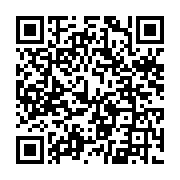By Sydney Doman
Sydney is a third-year Emory medical student and former MSDCI Director of Advocacy and Education.
Chronic pain is an American epidemic. Yet like many things in medicine, chronic illness, disability, and chronic pain are seen as weaknesses. Ironically, the strongest I have ever been was as a teenager with chronic pain. I experienced a decade of medical gaslighting, dismissal, and shame. I stopped speaking about my pain years ago. Only now that I have been diagnosed and successfully treated, do I feel comfortable speaking openly about my chronic pain. I recognize this privilege after suffering in silence for so long. I created the Pain Chronicles to shed light on chronic pain experiences in our community and hopefully make others feel less alone. This series will include four stories published over the month of September, in recognition of Pain Awareness Month.
* * *
Ten Years Too Long
By Sydney Doman
“Do you have pain now?” A dean asked me as I sat in his office discussing accommodations for my upcoming surgery. “Yes,” I nodded. He was visibly surprised.
Ten years.
I had been in pain every single day for ten years.
Physicians, in my experience, are very uncomfortable with the reality of chronic pain. Many don’t believe it’s true; how could someone be in pain every day? Especially someone so young. Some simply think young women are dramatic or the pain is psychological in origin.
I think physicians struggle to accept that the medical field has failed to successfully diagnose or treat someone for so long. Over the years I had been misdiagnosed a half dozen times. Physicians often did not want to even address my pain at all until other more “pressing” concerns had been addressed, and sometimes I was just flat out dismissed. Life went on, and every day I lived with severe pain. At some point I stopped mentioning my pain to doctors, it had never resulted in anything remotely helpful, and I was always scared they would think I was “drug-seeking”.
Ten years later, it all finally came to a head. After my first day of medical school, I sprinted to my car trying to hide my tears. I was exhausted after spending the whole day trying to power through the pain, grateful my mask could hide the agony I knew was all over my face. I forgot how painful it was for me to sit for more than an hour without lying down. In college, I could be found in between classes lying on rows of lecture seats, benches, or library couches. But this time, looking up at the ceiling, reclined in my car, sobbing, I knew something had to change. I couldn’t survive preclinicals, let alone graduate in that state.
Despite a decade of research, I had no solid leads on the condition I had, but I knew something was wrong. By some twist of fate, the surgeon I chose to see based on insurance and convenience, turned out to be a leading expert in my rare condition.
Five minutes.
Five minutes is all it took for a highly specialized surgeon to diagnose my rare condition. It felt too good to be true. After years of medical gaslighting, surely it wasn’t that easy. While it did take 6 months of insurance appeals for the novel surgery, it really was a simple fix.
90 minutes of surgery, 50 hours of physical therapy and one year later.
I have far more pain-free days than pain days. Pain no longer rules my every thought, plan, and action. Not a day goes by where I don’t think about the gift I was given and the medical team and physical therapist who helped me get here. I intend to spend the rest of my life trying to do the same for others because ten years is ten years too long.
